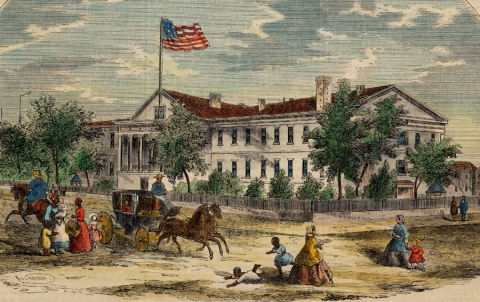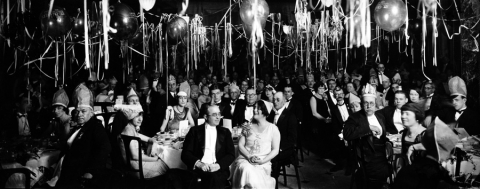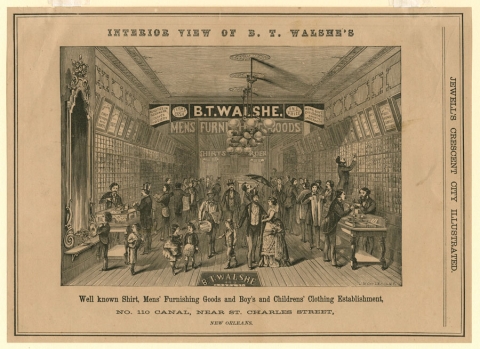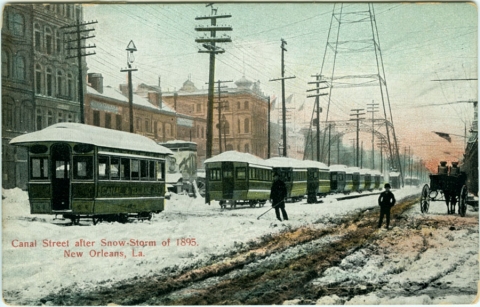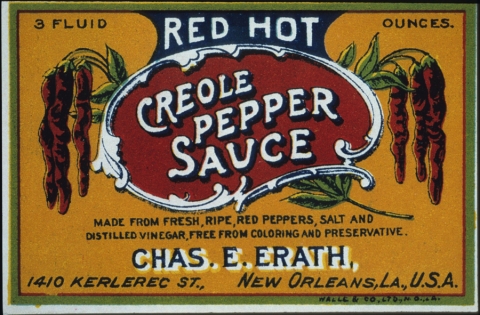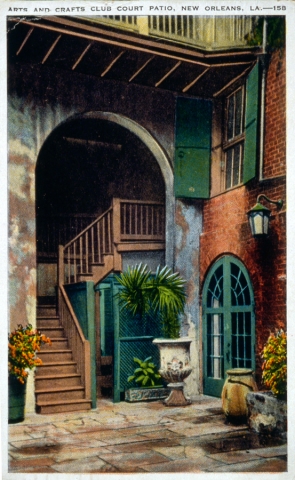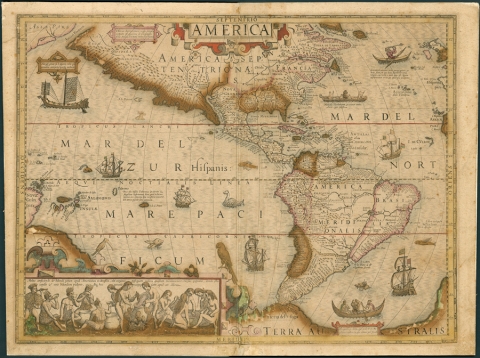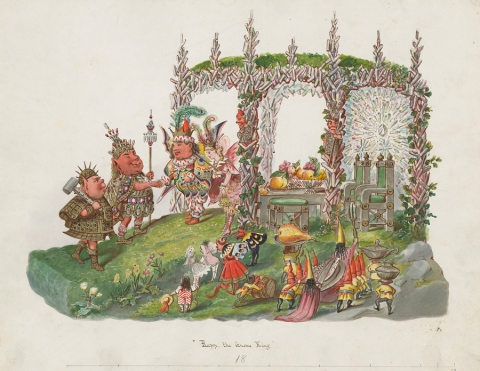On March 3, 1835 President Andrew Jackson, signed a bill authorizing the U. S. Treasury to establish a branch mint in New Orleans. By the same act, branch mints were also established in Charlotte, North Carolina and Dahlonega, Georgia. The Southern branch mints were the result of Andrew Jackson’s long war with the Bank of America and paper currency. New Orleans was selected as a location for the manufacture of hard currency because it was the “emporium of the Great Valley” with gold specie from Mexico flowing through its active markets.
History
Holiday Traditions: Past and Present
November 06, 2017
Imagine spending some time in the French Quarter during the holiday season in the 1800’s… can you hear the clip-clopping sounds of horses pulling buggies down the cobblestone streets? When invited into a home along Royal Street, you see a small potted citrus tree on the table decorated with little gifts, paper ornaments, and tallow candles. Mistletoe is hung above the door to bring good fortune throughout the year.
Window Shopping in Old New Orleans
February 03, 2017
Walk down Chartres, Royal, or Canal Street today, and you will see shopwindows filled with sparkling jewelry, stylish clothing, trendy household goods, and elegant furniture. If you did the same thing 150 years ago, you would see similar displays in many of the same windows. The exhibition Goods of Every Description: Shopping in New Orleans, 1825–1925, now on display at The Historic New Orleans Collection, illustrates the types of luxury goods from around the world and some of the stores customers visited along the shopping avenues of old New Orleans.
That Time it Snowed - in New Orleans!
October 31, 2016
New Orleans weather has a few predictable patterns. The summers are sizzling, with temperatures soaring above 90 degrees for weeks at a time and often pushing triple digits. At any time of year afternoon thunderstorms can suddenly arise and, after raining just enough to make everything damp and steamy, disappear just as quickly. Then there’s the ever-worrisome hurricane season, which stretches from the start of June through the end of November. One meteorological event most people don’t identify with this city is snowfall.
Jackson Square
August 01, 2016
Jackson Square is in many ways the heart of the French Quarter. Today, as a public park and tourist destination, millions of people rest in its shade from the summer heat, taking in the splendor of the surrounding historic buildings and the Mississippi River. Park-goers can relax on the benches or lie on the grass admiring the regal statue of Andrew Jackson, honored for his role in saving New Orleans from the British during the 1815 Battle of New Orleans: Brass bands and fortune tellers line up en masse along the Chartres Street side calling out to people going in and out of the adjacent St.
Creole Cuisine: New Orleans’s Distinctive Style of Cooking
May 10, 2016
New Orleans, and in particular the Vieux Carré, or the “old square,” as the French Quarter is often referred, is known throughout the world as a destination for gourmands and epicures. As the novelist William Makepeace Thackeray noted, “New Orleans, in spring-time... it seemed to me the city of the world where you can eat and drink the most and suffer the least.” The city is a place to enjoy decadent food of many varieties, but the cuisine that many likely think of when considering New Orleans’s famous food is Creole.
Bill Russell, Cosimo Matassa, and the Musical Culture of the French Quarter
February 03, 2016
Of all the things people associate with the French Quarter—food, history, architecture, cocktails...and on and on—music (like the Saints) has to be included in that number. Whether it is the sound of a brass band blasting out an old standard for the tourists around Jackson Square, the rhythm of a funk band covering classic-rock songs over on Bourbon Street, or the dueling pianos battling all night long at Pat O’Brien’s, music is ubiquitous in the Vieux Carré.
A New Year in the Old Quarter
November 02, 2015
The French Quarter is a popular party destination, where travelers come to seek out food, music, nightlife, and an all-around good time. Any holiday can be cause for a celebration in New Orleans, but New Year’s Eve is one of the most significant and has been since the earliest days of the city’s existence. As the New Orleans author Hartnett Kane wrote, “Christmas was the day for solemnity, for religion, and for family observance; New Year’s the time for conviviality. The holidays reached their climax on New Year’s Day, le Jour de l’An –the day of the year in more ways than one.”
Arts in the French Quarter
August 04, 2015
Grabbing an ice-cold lemonade or a cocktail and strolling through the French Quarter is one of the nicest ways to spend a summer day in New Orleans. The oldest neighborhood in the city, the French Quarter offers an abundance of entertainment. If your tastes are more artistically minded, then you’ll find plenty to occupy your time. A portion of Royal Street converts into a pedestrian mall during the day, and the myriad art galleries and antique shops open their doors to anyone ambling down the street.
Collecting Antiques: From Hobby to Institution
May 05, 2015
Filled with images of ships and sea monsters, one early seventeenth-century map of the Americas features a gigantic North America; so large, in fact, that it stretches across half the page and is comparatively larger than South America. Created by Flemish cartographer Gerardus Mercator (1512 - 1594), the map was originally printed in an atlas. The bottom left corner features a vignette of native women making a beverage - several are spitting into a pot, from which the men drink.
Costuming in Carnival
February 05, 2015
"Mrs. Betat's Sudden Death. Stricken With Heart Disease During the Strain of Carnival Work," screams the headline of an obituary run in the Daily Picayune on Thursday, Jan. 21, 1904. Although some people view Mardi Gras as a time to relax and party, for many the Carnival season is anything but relaxing. Each year costumers must top their creations of the season before, designing finery fit for kings and queens, and Louise Betat was one of the busiest.

